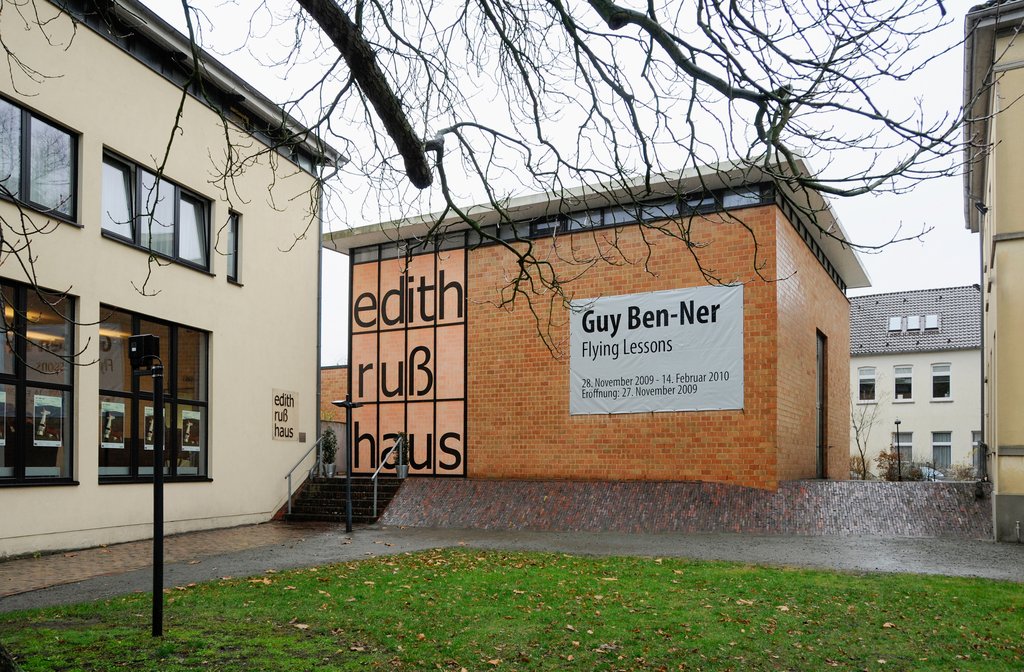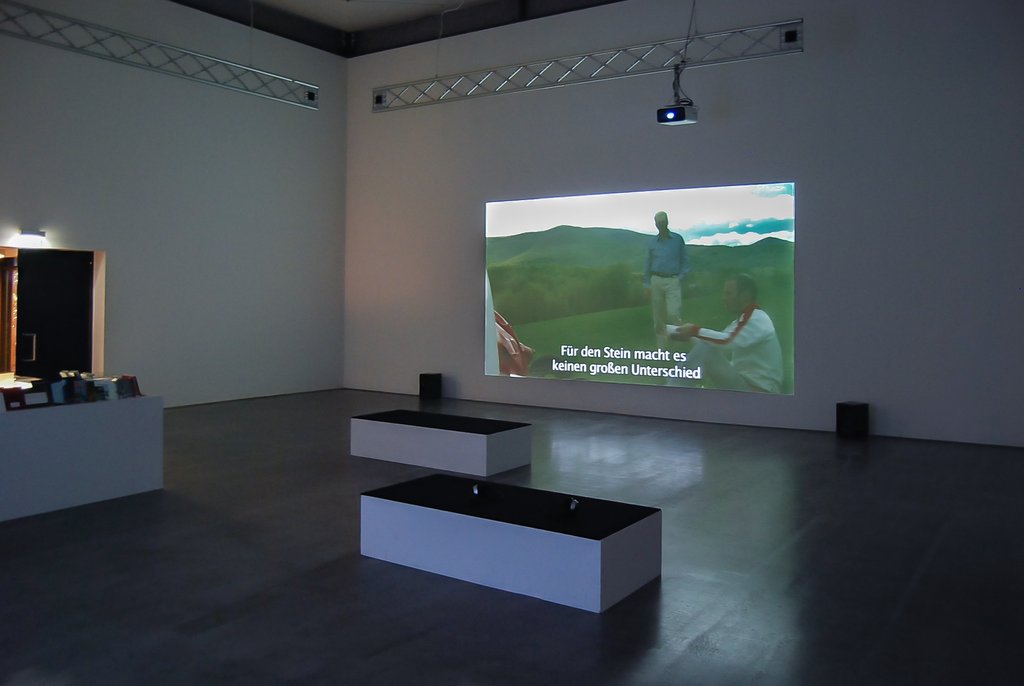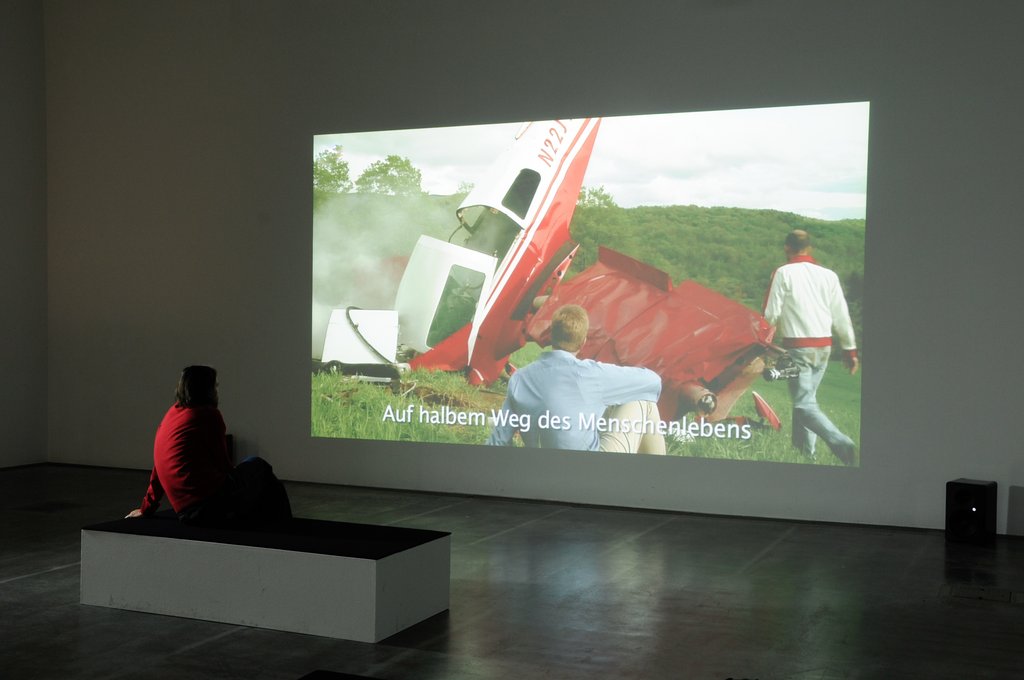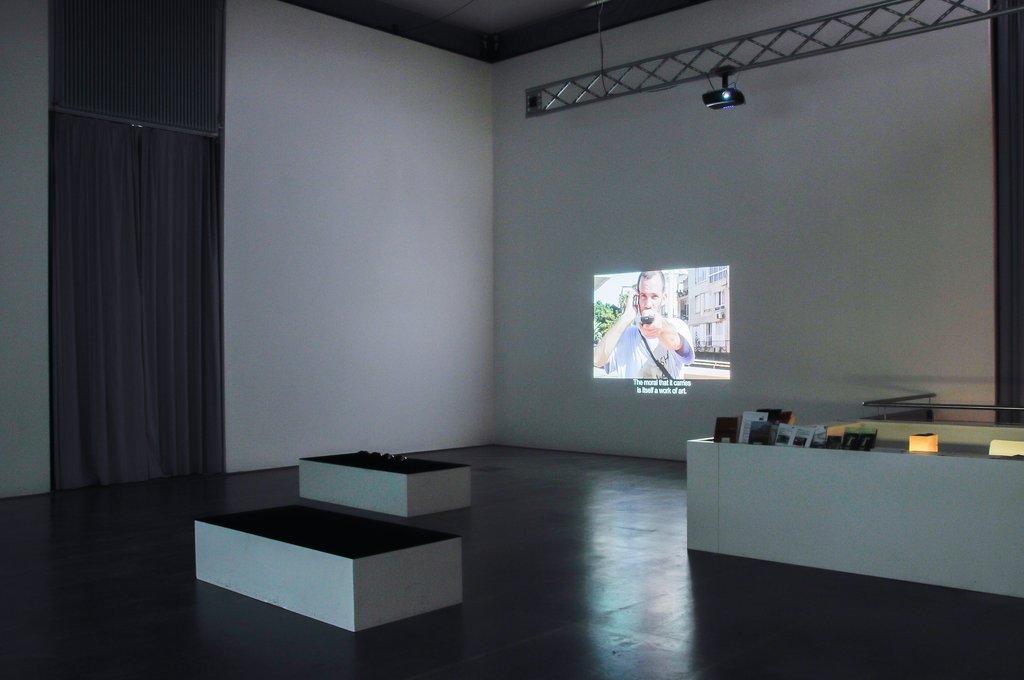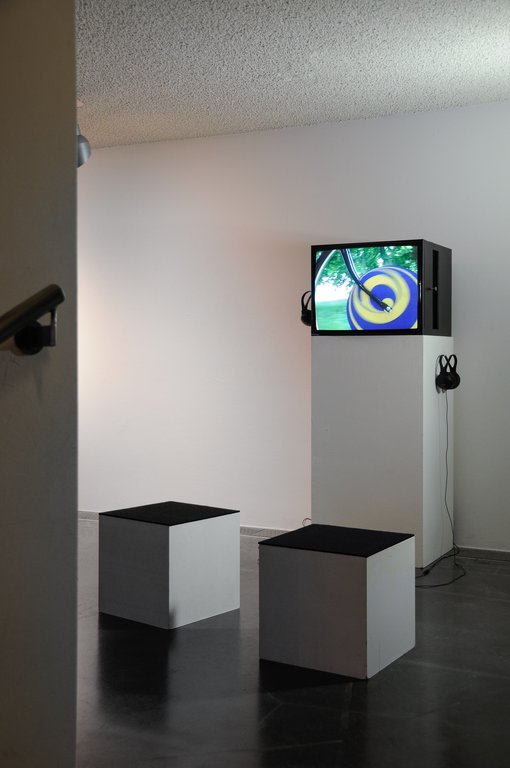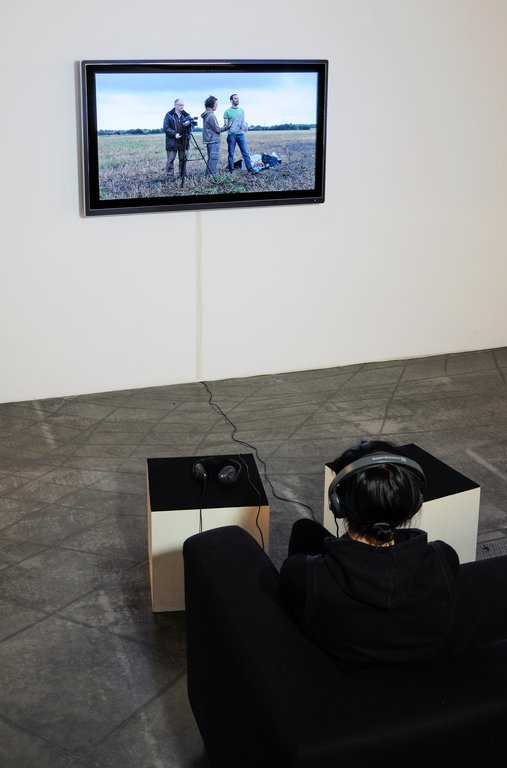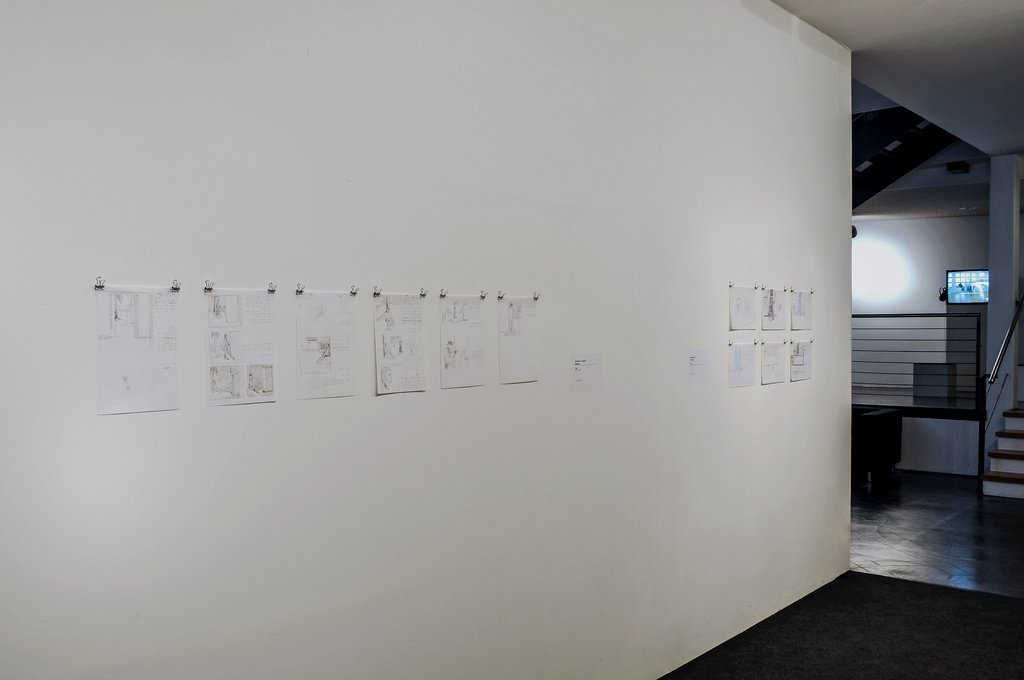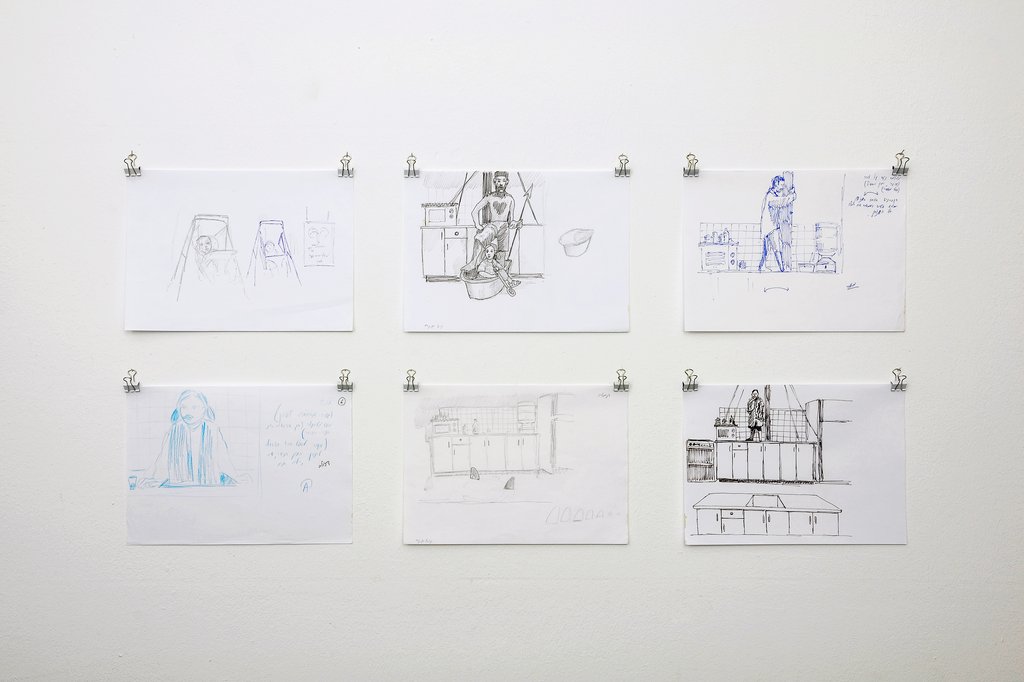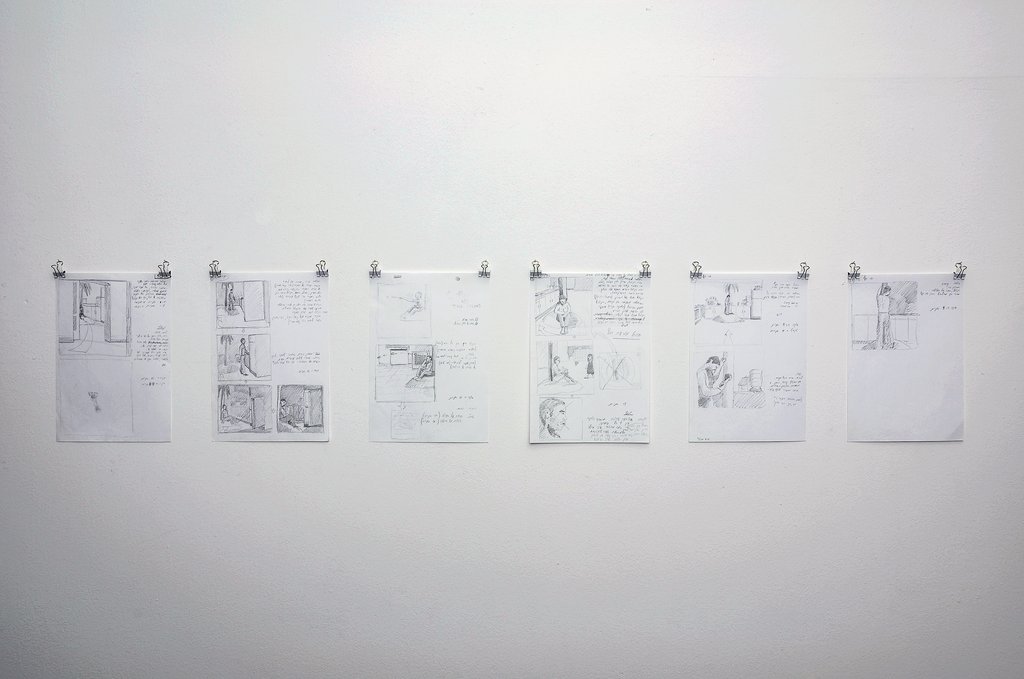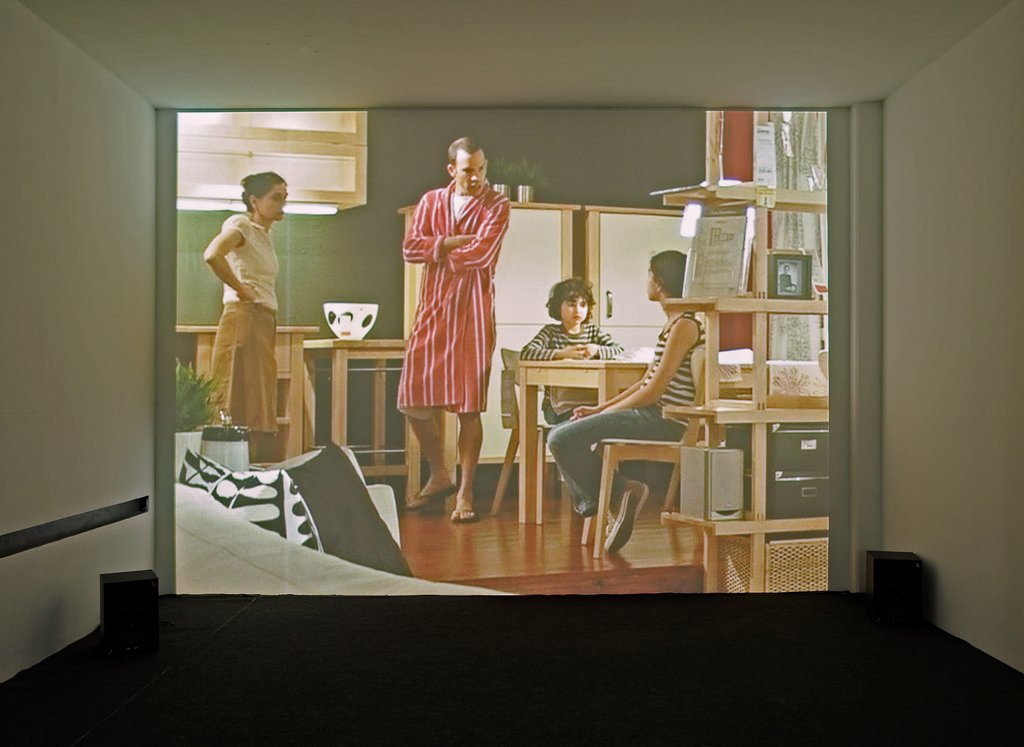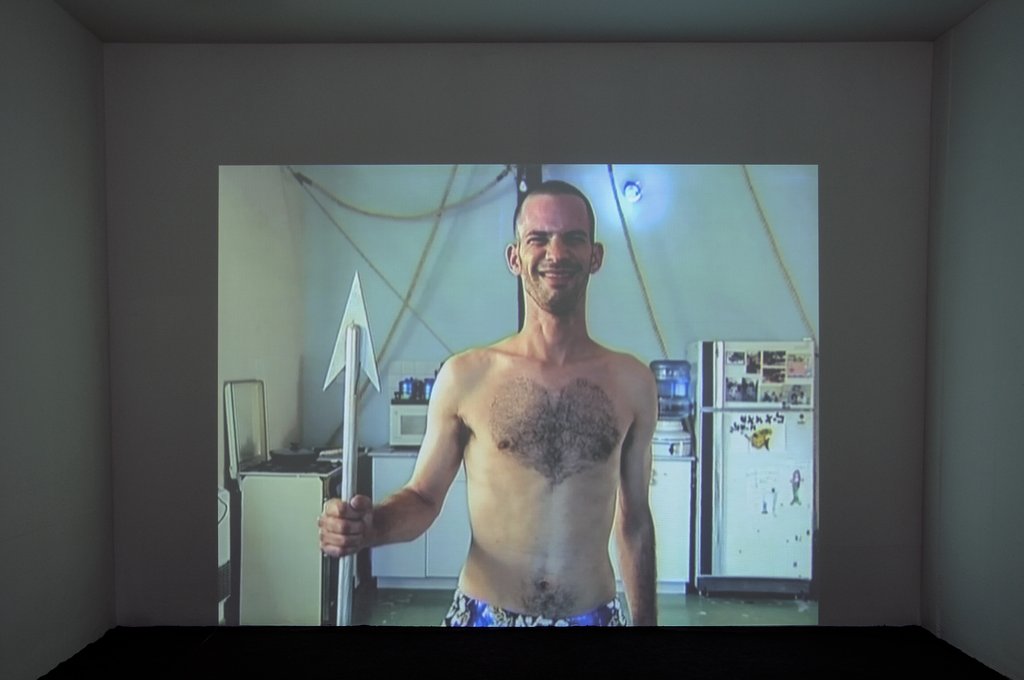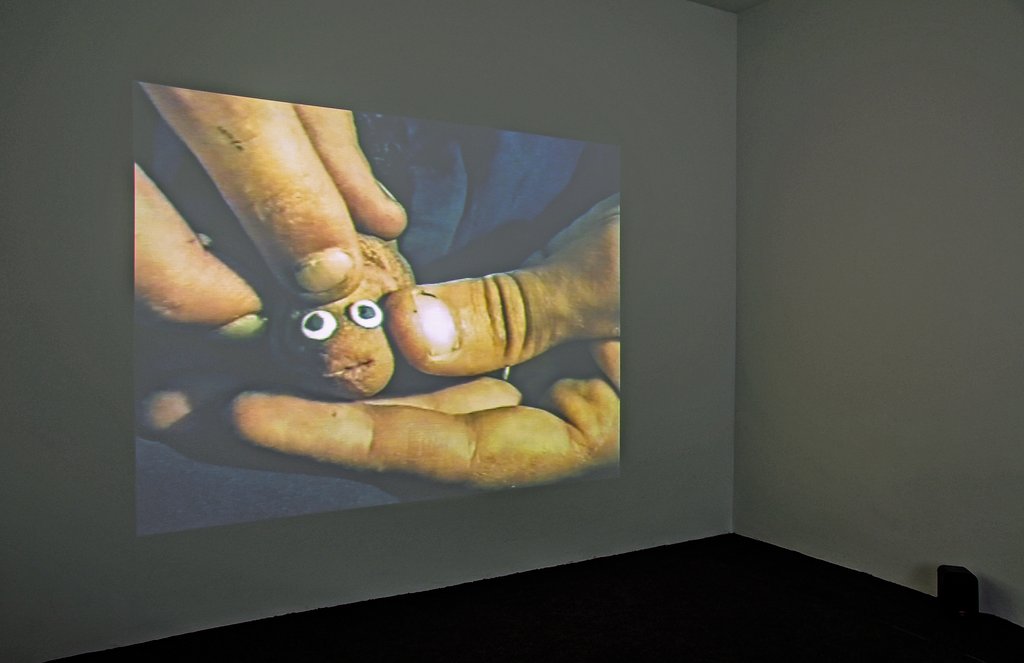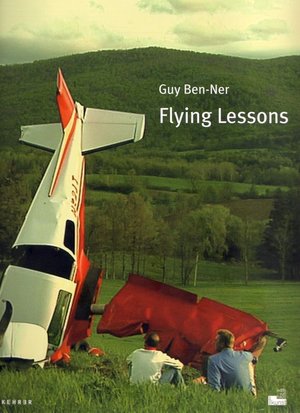Flying Lessons
The Edith Russ Site for Media Art presents the first German solo exhibition of Israeli artist Guy Ben-Ner, who became well-known when he represented his country at the 2005 Venice Biennale and when he participated in the 2007 Münster Sculpture Projects, among things. Since 1999, his video works have attested to the great diversity of subject matter in his work.
The focus of all films is the artist himself, who features himself and his role as author/director of the works and as husband and family father.
His children are involved (Berkeley’s Island, 1999, Moby Dick, 2000, I’d give it to you if I could, but I borrowed it, 2005–07) and sometimes his wife also plays the role of wife and mother (Stealing Beauty, 2007). Since in seemingly spontaneous, documentary moments, all portrayals of the artist and his family turn out to be artificially constructed performances. Ben-Ner ironizes all preconceived notions about roles.
The many references to film classics and especially to important literary works are not lastly indicative of this. Second Nature, 2008, is a rendition of Aesop´s respectively Jean de La Fontaine’s fable The Raven and the Fox with two animal trainers and their raven and fox, which in the course of the film becomes a performance of Beckett’s Waiting for Godot. In If only it was as easy to banish hunger by rubbing the belly as it is to masturbate, 2009, Ben-Ner and his film partner cite or adapt material, including from Don Quixote, The Little Prince, Through the Looking-Glass and What Alice Found There, Around the World in Eighty Days, Waiting for Godot and the Divine Comedy. The story itself is an absurd form of a road and buddy movie.
Ben-Ner’s films take place in funny settings. For Stealing Beauty the entire family secretly made itself at home in various Ikea stores. But viewers (and Ikea customers) gag on their own laughter when the artist and his family praise the egoistic and excessive materialism that solely equates the value of a person with their possessions.
Especially in his most recent works, Ben-Ner makes the film’s emergence and his role as God-like director the subject. For recently completed Drop the Monkey, the artist enters into a dialog with himself, which he conducts between his self in Berlin and his self in Tel Aviv, which not only revolves around the production conditions for this film, but was actually filmed with the dialog switching between both cities. In this manner, Ben-Ner creates the genre of the film performance. But what he fundamentally does is reflect on his identity as an artist and author and on the border between art and life, which he appears to permanently transgress in all films – even if this step is only an enacted part of his work.

